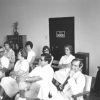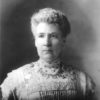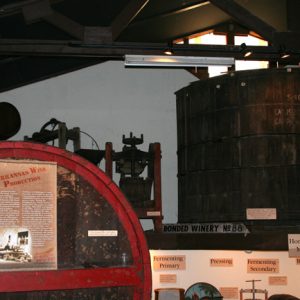calsfoundation@cals.org
Arkansas Historic Wine Museum
The Arkansas Historic Wine Museum in Paris (Logan County) was the only museum in the United States dedicated to preserving the wine heritage of an entire state. The museum stored and displayed artifacts from the earliest days of the Arkansas wine industry up to the present day until its closure during the COVID-19 pandemic. Formally incorporated in 1994 (though it had been established by Robert G. Cowie, owner of Cowie Wine Cellars, in 1967 as a hobby), this institution received numerous awards, including the Bootstrap Award from the Arkansas Department of Parks and Tourism, which is presented to those institutions that make great achievements on a limited budget. The museum was also featured in American Profile magazine.
Cowie started collecting artifacts of regional winemaking in 1957 as a personal hobby, and after starting Cowie Wine Cellars ten years later, he began displaying them within the winery complex. Two problems soon confronted him. First, he needed more room to house the collection, and second, he wanted to ensure that the items would be preserved in perpetuity for the benefit of the people of Arkansas. He took half of this winery and turned it into a museum with advice from the Department of Parks and Tourism and the Arkansas Museums Association. Then he formed a non-profit corporation to own the museum, a process that included establishing a board of trustees from across the state.
After the formal establishment of the museum, Cowie began the search for more artifacts from across the state, visiting the locations of many defunct wineries. Arkansas’s wine history dates back to the early European explorers and the Catholic priests who traveled with them, carrying wine for use in the celebration of Mass. Early immigrant communities brought their own knowledge of winemaking with them and established many wineries across the state, primarily in the Ozark and Ouachita regions; these tended to be smaller, cottage industries. After Prohibition, most of the over 1,000 permits for winemaking issued by the state were for home use, and though there have been 150 federal permits for commercial wineries issued since Prohibition, only a handful are still in operation to date. The small scale of many winemaking operations coupled with the stigma attached to alcohol in some parts of the state were some of the obstacles Cowie faced in the pursuit of the industry’s artifacts.
The museum had a collection of wine bottles from across the state, with colorful labels and names such as “Sure Shot,” “Sailor Girl,” “Big Daddy,” and “Eight Ball.” The museum housed a collection of presses and crushers that were used in the industry. There was a 2,000-gallon wine tank from the Henry J. Sax Winery and an 1,800-gallon cask from Cowie Wine Cellars to view, as well as many smaller items from some of the earlier wineries, such as Lone Wolf, Big Bear, and Dixie Dew. The story of how wine is made was laid out in an easily comprehensible display.
One of the highlights of the museum was the “Gallery of Barrels,” which featured barrel heads with wine-themed oil paintings by Bette Kay Cowie, wife of the museum’s founder. Visitors could also view exhibits displaying the work of Joseph Bachman, the leading grape developer in the state, who won national awards for varieties he created.
While the museum was open, it hosted the Arkansas Wine Heritage Day program on the first Saturday in May, which was open free to the public and included tours and wine tastings. As a part of this day, the museum presented its Founder’s Award to people who advanced the appreciation of Arkansas wine. A branch of the museum could be found at The Winery in Hot Springs (Garland County).
The winery and museum closed around 2020.
For additional information:
“Warm Up With History: Arkansas Historic Wine Museum.” Arkansas.com. https://www.arkansas.com/articles/warm-history-arkansas-historic-wine-museum (accessed July 27, 2023).
Robert G. Cowie
Arkansas Historic Wine Museum
 Divergent Prosperity and the Arc of Reform, 1968–2022
Divergent Prosperity and the Arc of Reform, 1968–2022 Historic Preservation
Historic Preservation Tourism
Tourism Arkansas Historic Wine Museum
Arkansas Historic Wine Museum  Cowie Wine Cellars
Cowie Wine Cellars 




Comments
No comments on this entry yet.